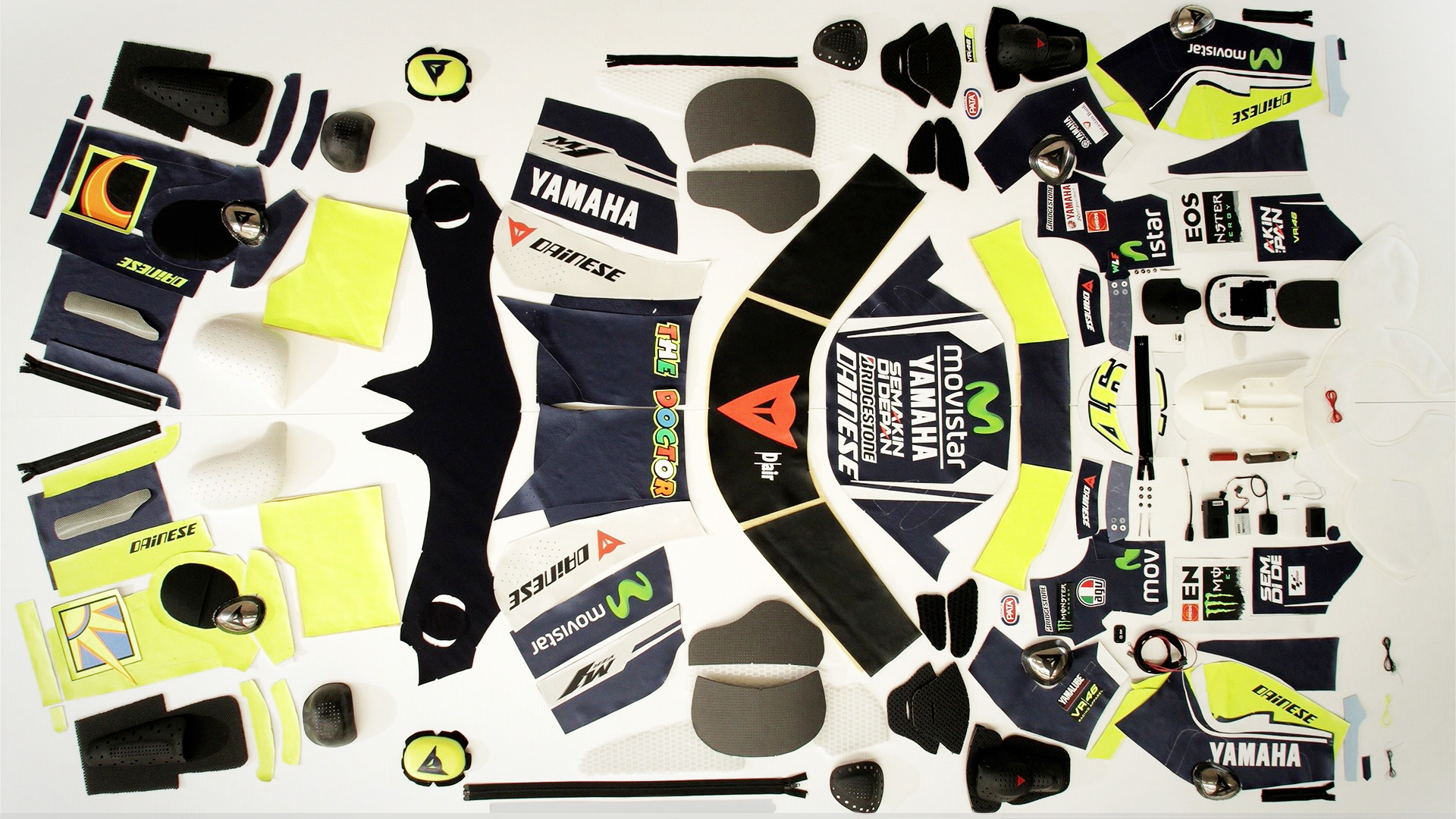How is a Dainese suit made? Which and how many are the steps that bring some pieces of leather to dart at 300 kilometers per hour, worn by riders from all over the world?
The definition of the suit’s sketch is the first phase, the creative one. The most innovative process goes through the Custom Works configurator, which enables to real-time customize a 3D model of the suit, being able to immediately see how every change looks like. Not only the color of the sections is customizable, but also that of metal plates and knee and elbow sliders. It is possible to add the logos of the rider and those of sponsors.
Once the design has been defined, you move to the next step: prior to leather pieces, titanium protectors and electronic airbags, the customer will meet Dainese qualified staff for the measurement process, still handmade, just like in the old days.
A tailor’s measuring tape, a piece of paper and a pencil. This is how a made-to-measure leather suit starts to take shape, even today. According to Dainese, 24 anatomic measures are necessary to describe in detail the characteristics and shapes of the human body and obtain a garment that fits like a glove. From the rider’s height to the size of the chest, shoulders and muscle circumference. Always keeping in mind the use of accessories, like the chest protector, gloves, In or Out boots.

Moving from a sketch to a full-fledged suit is a long and complex process that requires 6 to 8 weeks. It starts with raw materials: leather, aluminum, titanium, plastic and many more. A modern suit is an extremely sophisticated protection system that relies on advanced technology. The basic component – leather - is only apparently like the one used back in the ‘70s. It has gone through an important evolution. Thanks to specific tanning and patented processes, the Dainese leather reaches unparalleled levels of abrasion and cut resistance, while enhancing elasticity and lightness, ensured by reduced thickness.
Exactly during the ‘70s, the first composite protectors began to be inserted in racing suits, specifically on shoulders, elbows and knees. It was not until the beginning of the ‘00s that metal, titanium and aluminum plates arrived to once again protect shoulders, elbows and knees. The major aim of metal plates is to enhance sliding and avoid tumbling triggering. Impact protection, instead, is assigned to composite inserts mentioned above.
Starting from 2007, riders’ suits started to host the D-air® electronic airbag system, which became available for everyone just some time later. Reminding all of this is useful to explain the incredible number of pieces that make up a suit. We are talking about more than 300 elements, among pieces of leather, paddings, sliders and airbag components.
From a piece of paper to practice
The preparation of the suit begins with leather cutting. An automatic machine takes care of cutting the different pieces, following shapes and dimensions that have been previously designed on a digital model. Once all leather pieces are ready, the proper assembly starts. Over 300 pieces are put together by hand with care and thoroughness. Exactly like 50 years ago, when craftsmanship was the rule and not the exception. Needle, aramidic fiber thread, sewing machine and screwdriver are just some of the tools needed to create a Dainese suit.
Leather pieces are coupled together and to high-resistance elastic panels, following a very precise pattern. According to a patented process, other leather elastic areas, are inserted on hips, back and knees, to ensure perfect fit and follow all gestures. Each protector and the lining are placed inside, whereas sliders and metal plates are put on the outside.
The newborn suit is at its 90% and goes through the last step at the D-air® line, where the airbag system is tested, installed and connected. The next step? The track, of course.
Hours of work, manual skills, high-precision tools and care for detail: these are the ingredients of Dainese Custom Works. A craft service put in place by the same hands that work on MotoGP riders’ suits. A process that brings an element like leather, used for thousands of years, to become a cutting-edge ingredient, an integral part of a complex protection system. To ensure maximum safety to riders on streets and tracks all over the world.